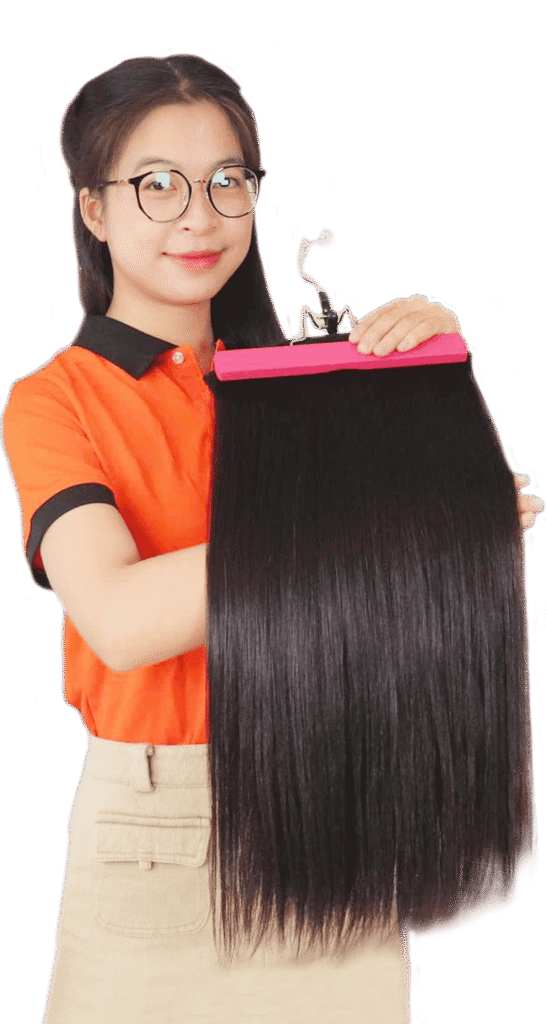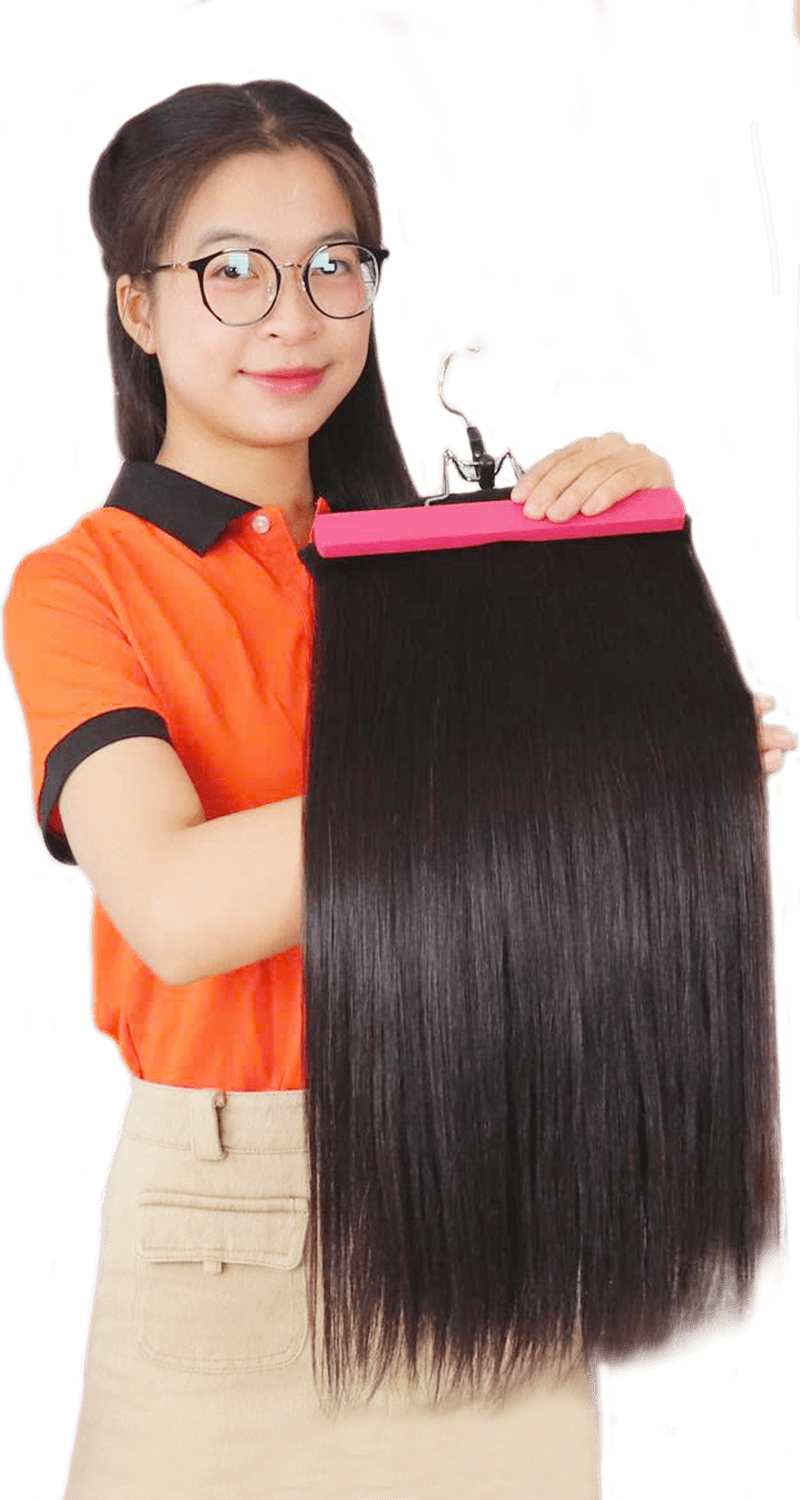Nestled within the rich tapestry of Slavic culture lies a treasure trove of beauty secrets, often whispered through generations and shared among intimate circles. Among these whispered gems are the secrets to maintaining and enhancing the natural allure of Slavic hair – a testament to tradition, resilience, and timeless elegance. In this blog, we embark on a journey to delve deep into the essence of Slavic hair – exploring its unique characteristics and celebrating its diverse styles. Join us as we uncover the beauty secrets cherished by Slavic women throughout history and discover how you too can embrace and enhance the natural beauty of your Slavic hair.
I. What is Slavic Hair?

Slavic hair is a popular term used by hair extension professionals and hair experts. This hair typically refers to a type of hair commonly found among people of Slavic descent, who are from Eastern Europe. Also known as “Russian/Ukrainian Gold”, Slavic hair is often described as being straight or slightly wavy, with a fine to medium texture. It can range in color from light blonde to dark brown, with shades of red also being relatively common. After the hair bundles have been prepared for a certain type of extensions, they are exported to North America, England, Europe, and Australia, where Slavic hair is hugely popular.
II. What Makes Slavic Hair Special?
This hair is renowned for its unique characteristics, which contribute to its beauty and versatility. Here are some of the top great features that make it special:
1. Slavic Hair - Fine Texture & Texture Retention Ability
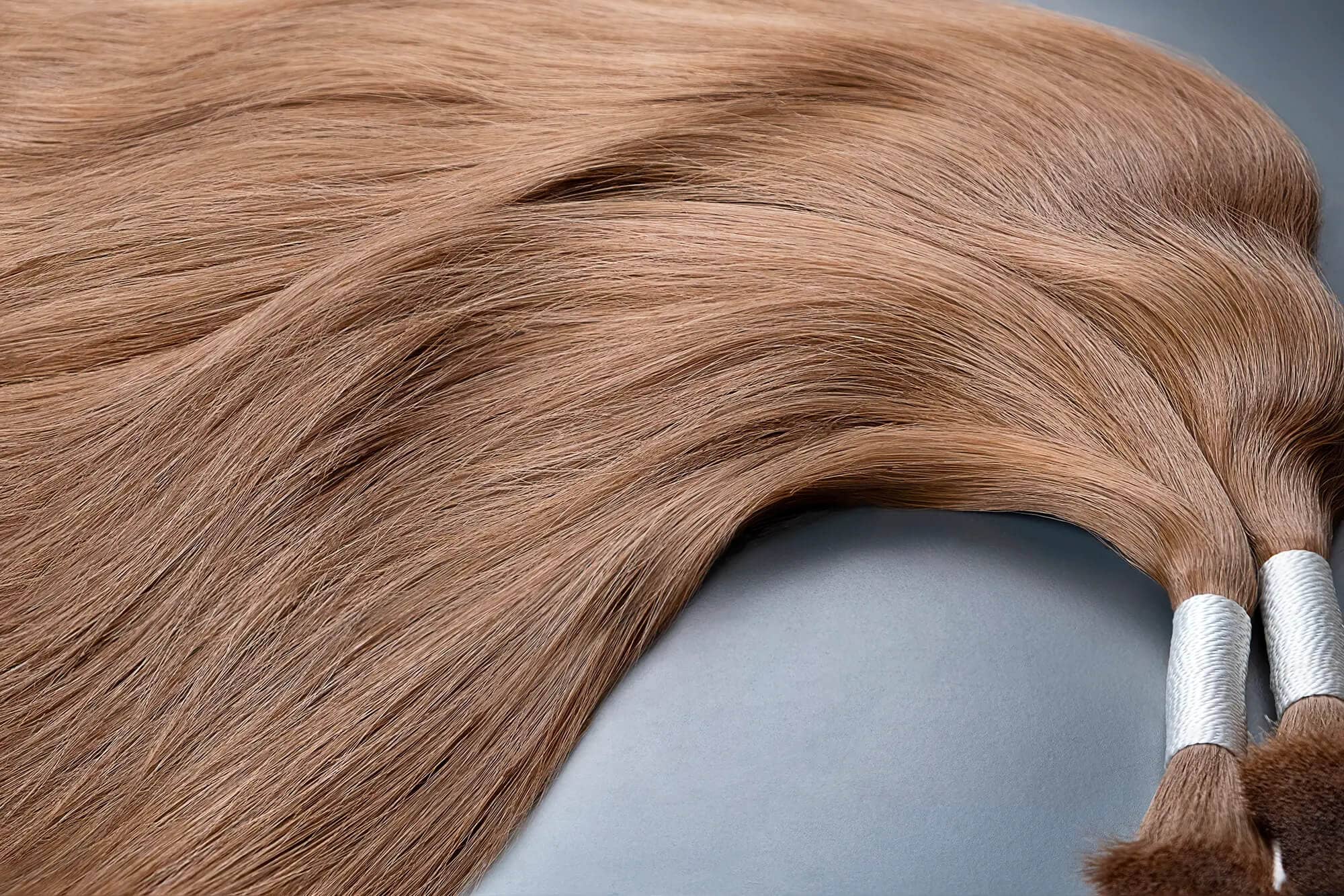
Slavic hair typically has a fine texture, which gives it a soft and silky feel. This fine texture allows for smooth styling and lends itself well to various hairstyles. Besides, this hair has excellent texture retention, meaning that styled curls or waves are likely to hold their shape for an extended period, requiring less frequent restyling.
2. Slavic Hair - Strength and Resilience
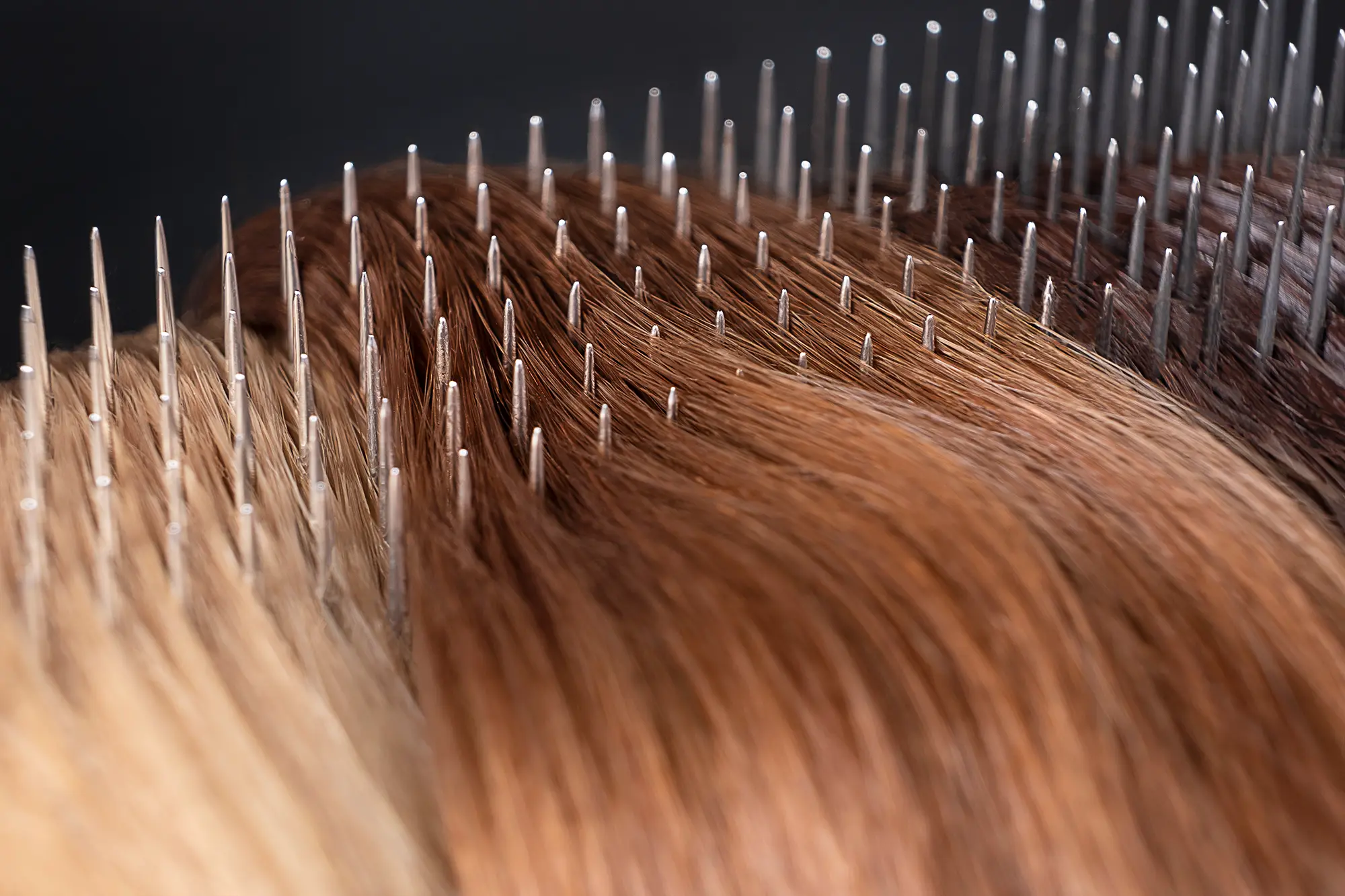
This hair type tends to be strong and resilient, making it less prone to breakage or damage. Thanks to that, this hair type is versatile and can be styled in various ways, including straight, wavy, or curly. This strength not only brings to this hair the adaptability that makes it suitable for different haircuts and looks, but also easier maintenance and ensures that the hair remains healthy over time.
3. Natural Thickness & Colors
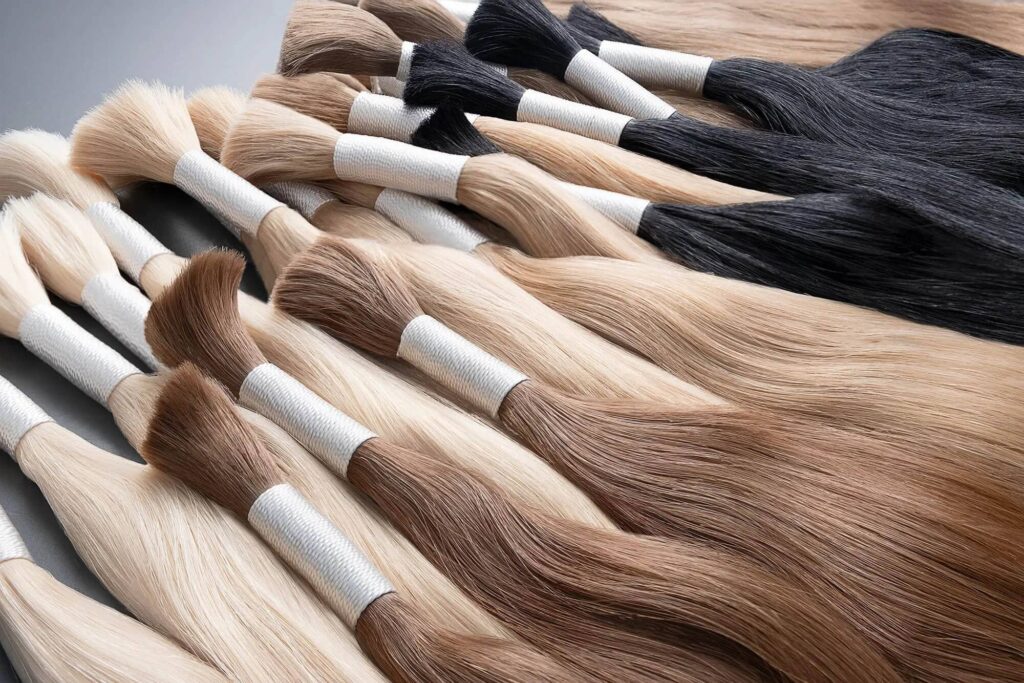
This hair is also known for its natural thickness, providing volume and body to hairstyles. This thickness adds dimension to the hair and makes it look full and lush. Not only that, this hair comes in a range of natural colors, including various shades of blonde, light brown, and even darker hues. These natural colors offer versatility in styling and allow individuals to express their personality through their hair color.
4. Manageability
Slavic hair is generally manageable and easy to style despite its thickness. It responds well to different hair care products and techniques, making it convenient for everyday grooming.
III. Ways to Identify Real Slavic Hair
One of the most common questions from clients who have been “shopping” around is “How do I know if I am getting real Slavic hair”. Identifying real Slavic hair can be challenging, especially given the diversity within the Slavic ethnic group. But if you know what to look for there are a few clues that can help you to identify.
1. Price of Slavic Hair
Over the past 4-years demand for this hair has skyrocketed and supply, due to the time it takes hair to grow, has not been able to keep up. The impact is that the price per KG which is denominated in USD has increased by 35%. Therefore, salons or vendors that offer “competitive” prices because they buy their hair wholesale or in bulk are a big red flag. The concept of buying this hair at wholesale prices or in bulk simply does not exist. You cannot buy Slavic hair in bulk or wholesale any more than someone can buy gold, silver, or diamonds in bulk or wholesale. Slavic hair is a rare commodity that is becoming rarer every day. So, if you see a salon offering a full head of 22” Slavic hair for around £800 you can be confident in knowing that this isn’t real Slavic hair.
2. Texture of Slavic Hair

Virgin Slavic hair should not be too smooth and silky. Plus, it never has that fake glossy shine. Now, this may come as a surprise for some – supposedly premium hair that’s not smooth and glossy. The explanation, however, is quite simple: excessive glossiness and smoothness are achieved through silicon processing, which is never good because silicon is easily washed out of hair making it dry and tangled.
3. Hair Ends
The real virgin extensions will have ends that are a few tones lighter than their synthetic counterparts or fake extensions of Chinese/Indian origin. One more thing: Asian extensions will have a cut that’s thick and even in its texture while hair ends on authentic extensions are typically thinner. This is because Slavic hair is soft and relatively thin, which is more evident in the hair ends.
4. Packaging Slavic Hair
The real virgin hair extensions should come in a bundle. They are never sealed in a plastic bag.
IV. How To Take Care of Slavic Hair
This hair type often retains its youthful appearance and quality for a longer period compared to other hair types. With proper care, this hair can maintain its beauty and health for an extended duration. Now let’s see how to take care of them!
1. Use a Gentle Shampoo and Condition Regularly

Opt for a mild, sulfate-free shampoo to avoid stripping the hair of its natural oils. This hair can be prone to dryness, so gentle cleansing is key. Keep in mind that washing hair too frequently can strip it of its natural oils, leading to dryness and potential damage. Aim to wash hair no more than 2-3 times per week, or as needed based on your scalp’s oiliness and your lifestyle. Besides, it can benefit from regular conditioning to keep it soft, manageable, and hydrated. Use a rich conditioner or a deep conditioning treatment once a week to nourish the hair. After washing, use a wide-tooth comb to gently detangle your hair, starting from the ends and working your way up to the roots. This will help prevent breakage and minimize damage.
2. Use Hair Masks
Incorporate hydrating hair masks or deep conditioning treatments into your routine to provide extra moisture and nourishment to your hair. Look for products containing ingredients like argan oil, shea butter, or coconut oil.
3. Protect from Heat & Avoid Harsh Chemical Treatments

Limit the use of heat-styling tools such as blow dryers, straighteners, and curling irons, as excessive heat can cause damage and lead to dryness and breakage. When heat styling is necessary, use a heat protectant spray to minimize damage. Besides, you also should minimize the use of chemical treatments such as perms, relaxers, and bleach, as these can weaken the hair and cause damage.
4. Trim Regularly
Keep your hair healthy and prevent split ends by getting regular trims every 6-8 weeks. This will also help maintain your hair’s shape and manageability.
V. Conclusion
In conclusion, Slavic hair possesses a unique allure that stems from centuries of cultural heritage and natural diversity. By understanding the secrets, exploring the diverse styles, and following proper care tips, individuals can unlock the full potential of this hair, embracing its beauty in all its richness and diversity.


 BEST SELLING PRODUCTS
BEST SELLING PRODUCTS Wig Hair
Wig Hair WHOLESALE
WHOLESALE Contact us
Contact us Sale Events
Sale Events